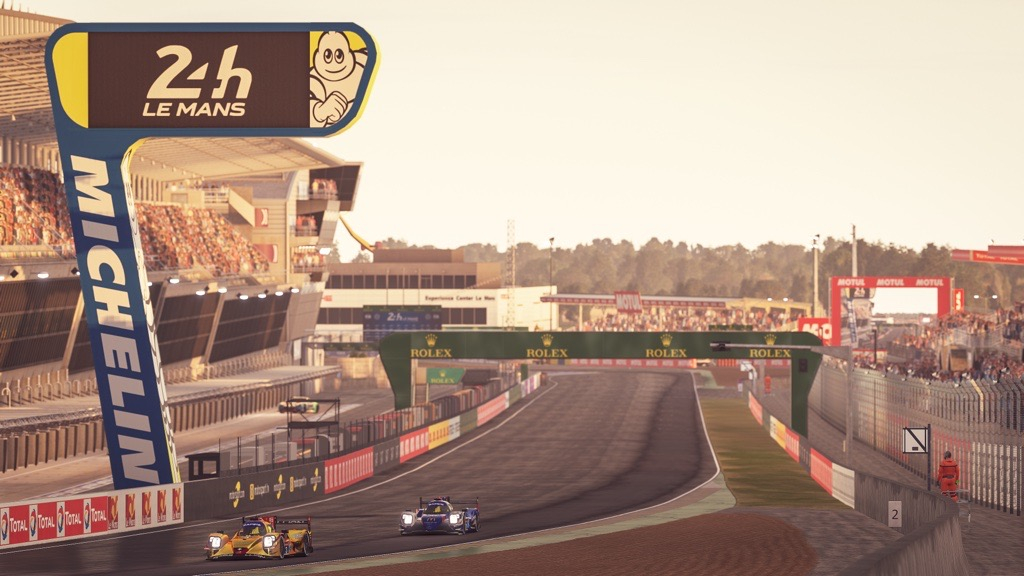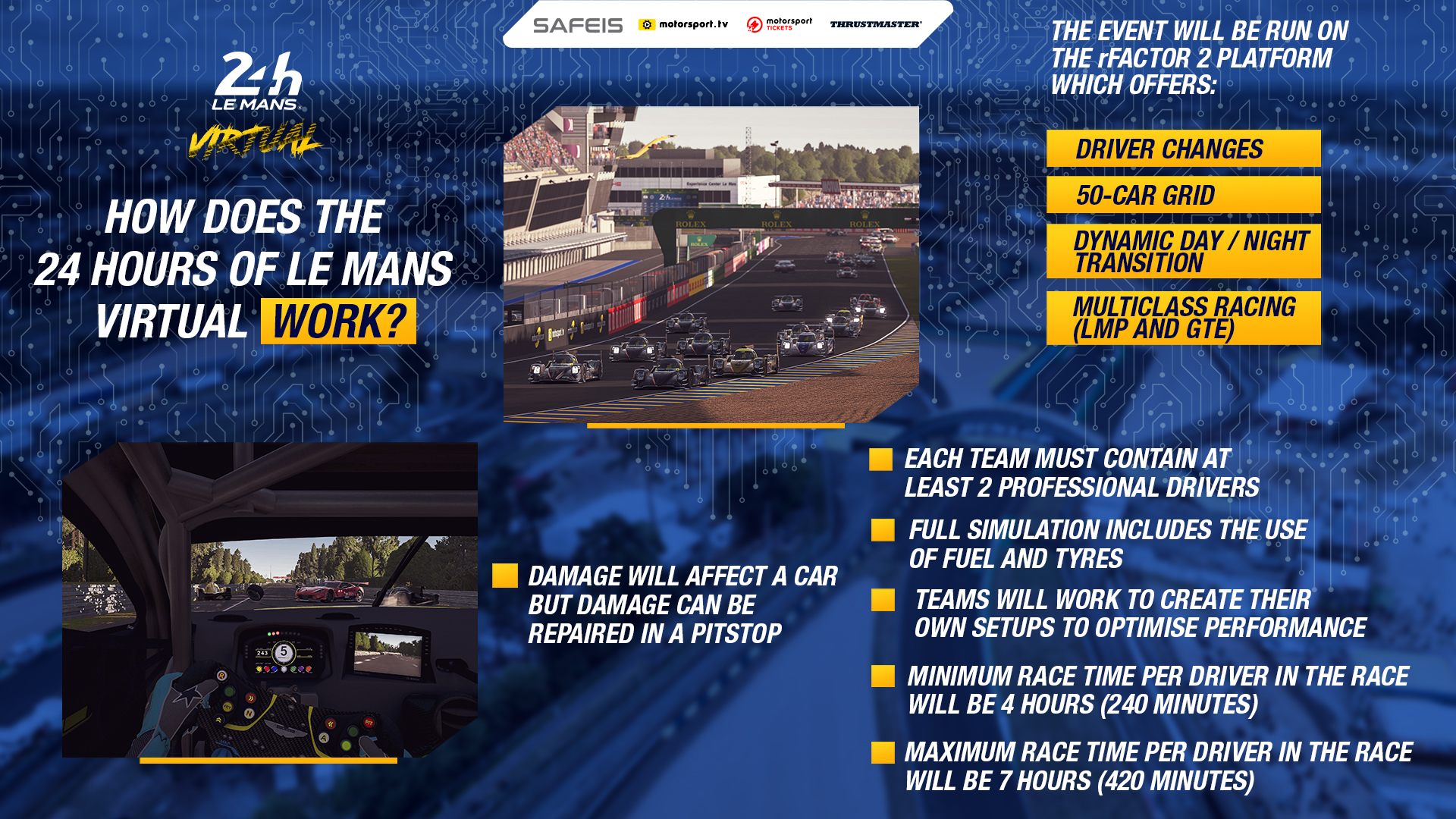
In case you missed our BIG news, the FIA WEC – alongside the ACO and Motorsport Games – will hold the world’s biggest endurance esports race ever assembled this weekend (13-14 June).

New to esports and keen to understand more about how it works? Then look no further as we have the answers to all your questions! Here’s our special guide, with the second instalment due to follow tomorrow morning…
ENTRIES
How were the entries decided upon?
The selection for this race is not linked at all to the selection for the real 24 Hours of Le Mans as it brings together the best of racing teams and esports squads. The selection was made by a committee representing both motorsport and esports.
How are teams made up?
Each line up consists of 4 drivers. Each must contain at least 2 professional drivers with an International FIA licence or equivalent. The other two can be either sim racers or professional drivers. As in the real 24 Hours of Le Mans, drivers are not permitted to drive in more than one car.
Why only 50 cars?
A 50-car grid will enable us to keep the online service as stable as possible. Adding additional cars would add unnecessary risk to an already complex event. We will have 200 drivers from all over the world joining the race, so we need to minimise the chances of any disruption.
What cars are available for this event?
There are two classes of car in the race – LMP and GTE. There is one LMP model based on the ORECA 07 LMP2, and four GTE models: Aston Martin Vantage, Corvette C.7R, Ferrari 488 GTE and Porsche 911 RSR.
Car numbers for the LMP class are between 1-50 and for the GTE class between 51-99.
Can teams choose how their car looks?
Just like in real life, teams are free to design their own liveries, with a few areas being left free for official partners (such as windscreen banner).
THE COMPETITION
What platform will this be run on?
The event will be run on the rFactor 2 platform which offers advantages including driver changes, dynamic weather conditions, dynamic day/night transitions, multiclass racing (LMP and GTE).
How much practice will teams and drivers get?
Each driver must take part in at least one of the three test races (held in the two weeks before the race) in order to familiarise themselves with the game, the rules and procedures. Drivers must complete a minimum of 10 laps (including a minimum of 5 full timed laps, whilst the 5 other laps can be pits out – pits in loops) during an official Test Session or Test Race.
There are four free practice sessions available between 9th – 12th June but they are not mandatory. They are open pitlane sessions and one person per team may compete at any time when the pitlane is open.

How does qualifying work?
A 20-minute qualifying session will be held for GTE cars only on Friday, 12 June from 18h10 – 18h30, and 20-minutes for LMP cars only from 18h40 – 19h00. The team with the lowest time will start on pole position and the highest time will start in last place. The starting grid will be split by class so that the top GTE car will start behind the last placed LMP car.
Teams are only required to field one driver in qualifying but may choose to change drivers at their discretion so you’re going to have to keep watching to see who goes fastest!
Is there a Hyperpole?
There will be no Hyperpole in play. Fans will have to wait for the real 24 Hours of Le Mans in September to witness the first ever Hyperpole in action!
Can teams work on their car’s set-up?
Absolutely! The software allows teams to optimise their car set-up such as suspension changes, downforce levels and gear ratios. Pretty much everything that they can change and optimise in real life is simulated within the game.
Do all the GTE cars have the same level of performance?
The cars competing in GTE are based on production models which are fundamentally different from each other. To create a more level playing field, the GTE category has a BOP (Balance of Performance) applied by the developers of rFactor2.
Check back tomorrow when we answer all your questions about how the race itself will work and some answers to queries about communication and visibility.
More information about 24 Hours of Le Mans Virtual can also be found via https://24virtual.lemansesports.com/